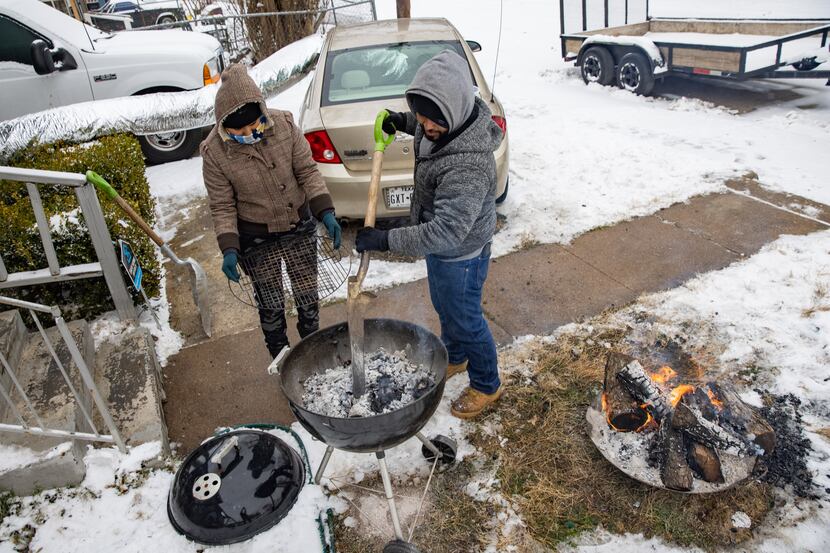A conservation notice issued this week gave a moment of dreaded deja vu to many Texans, who are still reeling from February’s devastating grid failure. Worries about outages aren’t unwarranted — experts say many Texans will likely experience outages.
But before anyone panics, it’s important to know several things about what causes summer outages and what makes them different from the deadly outages Texas saw this winter.
Summer and winter are different seasons and have different problems.
In April, the Electric Reliability Council of Texas, the state’s grid operator, issued a report outlining scenarios that could lead to grid failure, most likely in August, when temperatures and demand for power to run air conditioning units is highest. Each of those scenarios involves some combination of high temperatures, consequent high demand, low wind in regions where wind power is dominant, and a setting sun leading to less available solar generation.
Like February, high demand, combined with poorly timed generation outages, would lead to outages to prevent total collapse. But unlike February, ice won’t prevent some power from coming back online. In February, when key elements of the infrastructure froze, a lot of generation was unable to be revived until temperatures warmed and the ice melted.
In the summer, power would likely be able to come back online after sunset, when wind picks back up and after thermal generation resources are timed to kick in. Therefore outages will likely not last longer than a few hours. Although there may be widespread outages this summer, they won’t likely last for days.
The Public Utility Commission is working on creating a better rolling outage system.
What made February’s outages so miserable for some Texans was that they lasted for days at some households, but only for a few hours or less at others. As it turned out, houses located near critical infrastructure — hospitals, fire departments, etc. — were spared the days-long outages. This summer, the PUC is working to better pinpoint critical infrastructure where power cannot be shut off so that rolling outages can be better spread out between different neighborhoods.
Texas has a higher summer power reserve margin than ever before.
According to ERCOT’s summer outlook assessment, this summer’s power reserve margin will be 15.7%, which is larger than ever before.
Warren Lasher, ERCOT’s senior director of system planning, said in April that the increase is largely driven by an increased presence of renewable generation capacity on the grid.
During a press conference following the signing of Senate Bill 3, North Richland Hills GOP Sen. Kelly Hancock said he feels confident that the state’s increased reserve margin will help the state weather potential outages better than in previous summers.
“Our system continues to grow and we continue to have investment that helps meet the demands that we have on our load,” Hancock said.
However, ERCOT’s reserve margins are still relatively small compared to those of other regional entities that make up the North American Electric Reliability Corporation.
ERCOT is still figuring out how to adjust to a changing grid with more renewables.
Contrary to some politicized rhetoric, more renewables doesn’t decrease reliability. However, their increased presence on the grid does change the way system operators have to respond to power coming online and offline throughout the day as weather conditions and renewable generation output change.
Daniel Cohan, a Rice University energy expert, said this summer he’ll be watching how grid operators plan to quickly switch power sources on or off depending on what’s generating at a given time.
Because it can take a while for thermal generation to be quickly switched on as solar output decreases with the sunset, he said outages would be likely to occur in the evenings.
Transmission constraints could cause problems getting power from areas of the state where renewable generation is highest.
Much of the state’s renewable generation resources are in West Texas and other rural areas of the state, where land is cheaper. However, a lack of plentiful transmission capacity to carry that energy to other parts of the state can place constraints on the generators, meaning that some available generation is essentially trapped. Because reserve margins are led by renewable generation, transmission constraints could cause a problem during outages.
